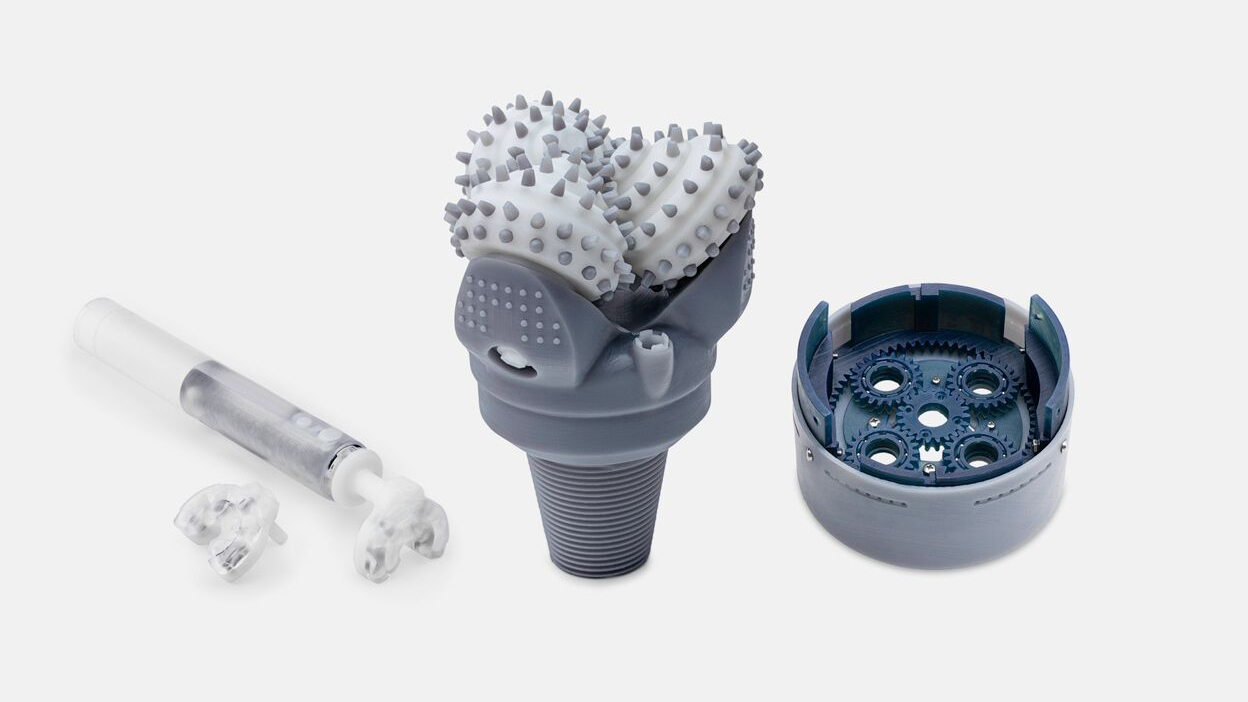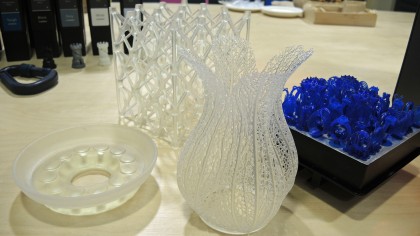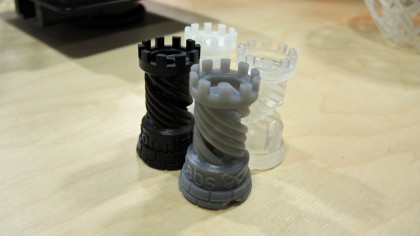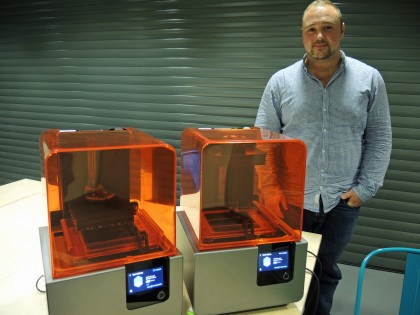I've seen the second generation of 3D printing, and it blew me away
On form

When you look at the narrative of 3D printing, there are parallels with virtual reality's own tale: a great concept that, for a long time, just didn't have the technology to really make it sing.
But I've seen the next phase of 3D printing and I really believe that it's about to have its major Oculus moment. I genuinely believe that in years to come we'll look back on the timeline of 3D printing and consider this to be one of the 'breakthrough' moments.
On meeting 3D printing company Formlabs I was greeted by a table covered in various 3D-printed objects, most of which looked like the familiar, flimsy plastic designs that I've come to associate with 3D printing. I picked up what looked like a bowl and, sure enough, it felt lightweight and fragile.
But then I was handed another version of the same bowl – this one was made from a thicker, sturdier plastic. It actually felt – and this is the important distinction – like something I would pick up in a shop and actually buy. With real money.
Until now, 3D printers have used a process called FDM – fused deposition modelling. Formlabs, on the other hand, creates printers that use a technology called stereolithography. "It starts with a liquid resin that gets cured and hardened by a UV light. It's actually the same amount of printing time, sometimes even faster," explains David Lakatos, product lead at Formlabs.
Its printers are already out in the wild. Tesla owns one. The set designers on Interstellar used one to build some prototypes of the spaceship. Now Formlabs is announcing a new printer, the Form 2, a more consumer-friendly machine that improves on the promise of 3D printing.
"It's really focusing on reliability." says David. "All those tech specs are, in my opinion, secondary to the most important thing here, which is a really reliable printer."
Get daily insight, inspiration and deals in your inbox
Sign up for breaking news, reviews, opinion, top tech deals, and more.

I asked why the second bowl I picked up, the one that was printed by the Form 2, felt more like the result of traditional manufacturing. "Between the layers you have the same bond as on the layers themselves," says David. "It's isotropic"
The revolution will be printed
Surprisingly, the first 3D printers invented actually used stereolithography technology but the machines were big, expensive and industrial. Then FDM became big and nobody was exploring stereolithography any more. In stepped Formlabs, which launched its first printer in 2013 following an almost $3m Kickstarter campaign.
The Form 2 builds prints that are over 40% bigger than the Form 1 could manage, while an improved printing process affords more intricate details at a better resolution. Formlabs has also designed it to make the process simpler for the user with what it calls a "1-click print".
I'm also shown a syringe-shaped device that hospitals can use to give stitches to patients. This one is actually assembled from different parts, including a functioning button that was printed with a special flexible material. This is a prototype that one hospital was able to build in five weeks instead of the usual six-month period, thanks to stereolithography.

"People are realising that maybe you don't need a 3D printer in every home," says David. "but perhaps every engineer, every architect, every product designer needs one in their studio. That's where we're envisioning the new product"
One problem the Form 2 hasn't quite solved, however, is speed. 3D printing is a slow process, and printing one object from a single material can take over an hour. "Getting it down to half an hour or 20 minutes, I know the problems we need to solve and they're not unsolvable," contemplates David when I ask how far off we might be from laser printer-speed. "Getting it down to one minute is just another jump, but we need to do the first jump to understand those problems."

The Form 2 will be made available on September 22 for $3,499 and will come bundled with a litre of printing resin as well as the PreForm software. Formlabs hopes that this will kickstart the next phase of desktop 3D printing - at the very least it should set the bar a fair bit higher.
"Everything started with these very industrial machines," says David. "It was the first time these machines came out of the labs and they were half the size of this room. But in 2010 with what we call the first wave of desktop 3D printing, Makerbot and others really started pushing the envelope on making it cheap, easy to use, and it would fit on your desktop. At least that was the dream. I think it definitely achieved the getting broad, but it's definitely fallen short on reliability."
Let's hope that's all about to change.
Hugh Langley is the ex-News Editor of TechRadar. He had written for many magazines and websites including Business Insider, The Telegraph, IGN, Gizmodo, Entrepreneur Magazine, WIRED (UK), TrustedReviews, Business Insider Australia, Business Insider India, Business Insider Singapore, Wareable, The Ambient and more.
Hugh is now a correspondent at Business Insider covering Google and Alphabet, and has the unfortunate distinction of accidentally linking the TechRadar homepage to a rival publication.
